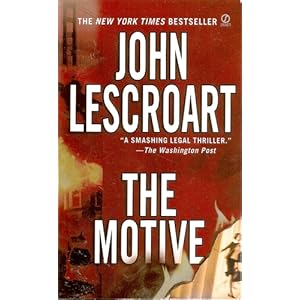Major developments:
*Cosmic Boy and Night Girl have returned from a vacation in the 20th Century, only to find it radically altered from the history that they have known, without the Superboy of Smallville who inspired the formation of the LSH, and who later grew up to be Superman. In this iteration, Superman made his first public appearance in 1986, and was never active as a "Boy of Steel." They confronted an old and powerful enemy, the immortal and entropic Time Trapper, who warned them to never attempt to travel in time again.
*Ignoring this, Brainiac 5 leads a team that includes himself, Cos, Night Girl, Ultra Boy, Blok, Invisible Kid, Sun Boy and Mon-El back to Superboy's time of the 1960s. But their old friend betrays them, trapping Mon-El, Ultra Boy, Cos and Night Girl in stasis. The others use the time bubble to move forward in time...
*Brainy and the others find Superman in the late 1980s, but he has no memory of the LSH, and while he finds their story about his history and recent events intriguing - "like some crazy Twilight Zone version of my life" - they are all frozen in time by Superboy and his stasis ray.
*Superman breaks free from Superboy's stasis ray and pursues him back to the 1960s, while the Time Trapper explains to the audience what the heck is going on: he has taken advantage of a temporal anomaly - the LSH interacting with a universe that never existed - to create that universe itself from a sliver of time, one million years old. This "pocket universe" included a Superboy who donned a costume at the age of eight, inspired and later joined the LSH of the 30th Century. Each time the LSH, who are really from the future of the new-to-us Superman's universe (the "real one"), traveled back to visit Superboy, they were actually passing from our universe into this "pocket."
*The two Kryptonians fight. Superboy is actually a hell of a lot more powerful than the new-to-us Superman, but the older man's got the moral strength, and knows that whatever has gone on to make the Boy of Steel betray the Legion, his heart isn't in it. Superboy concedes; he's learned about the Time Trapper, after the incidents of the Crisis on Infinite Earths. The Trapper has demanded that the Legion be destroyed for his "pocket universe" to survive, and desperately hoped that Superman could find an answer. The Legion insists, however, that Superman remain in 1987. If he were to die in battle with the Trapper at the end of time, it really could unravel all of history.
*But the casualty of the battle is actually Superboy, who is mortally wounded while heroically powering one of the Trapper's devices and sending his adopted homeworld into safety somewhere else, ripping the pocket universe away from the Trapper's control and also away from the Crisis on Infinite Earths. His last feat of strength is flying the Legionnaires' bubble back through time to the correct 2987, and he dies in Mon-El's arms after asking his old "brother": "Take care of Earth for me... it -- it was the nicest home a boy could want..."
*SP Officer Gigi Cusimano spends an evening reminiscing about the days when she dated Colossal Boy before she accepts a promotion and commission to be chief of the SP attachment on Mars, which will probably make her unavailable for many more evenings with Sun Boy.
*Cos and Night Girl retire to her home planet of Kathoon. Finding evidence of a plot by the alien Dominators, they call for backup. With the LSH unavailable, Bouncing Boy, Comet Queen, and Myg - the new Karate Kid - come to assist. They decide to form a new group of Substitute Heroes.
*The criminal kingpin Starfinger finds a couple more of his extortion schemes halted by the Legion, and he has a great big temper tantrum.

I'll come back to Starfinger, who really is proving to be a disappointment, in the next chapter of this reread. This time out, we'll talk about Superboy.
DC Comics has stopped and restarted their continuity heaven knows how many times in the last thirty years, and never understood the lesson that writer and artist John Byrne taught them in 1986: you have to do a full, line-wide reboot for anything to make sense and not have huge plot holes. Byrne, along with George Perez, who rebooted Wonder Woman around the same time, were probably the only DC creators who did it right. They certainly didn't do it very well (coughByrneBigBardaSleezcough), but that's a separate argument.
Byrne perceived that one of the problems with Superman in the early 1980s was his enormous supporting cast of fellow Kryptonians and hangers-on. He was far too powerful, and in the unlikely event he did meet too great a challenge, he had a mob of cousins and parallel universe "brothers" and the entire city of Kandor to call for help - hardly the life of the "Last Son of Krypton." Byrne also dumped most of the dumber aspects of the character, apparently asking the very sensible question, "When was Superman ever stupid enough to tell people that he had a secret identity?" This new, streamlined Man of Steel made his public, costumed debut as an adult in 1986, after Clark Kent had a successful athletic and college career, arriving at the Daily Planet as a seasoned reporter with experience covering war zones for the wire services and only using his super powers, secretly, in emergencies. In short, Byrne made Superman readable for the first time in ages, and consigned the bumbling, foolish, No-Friends Clark to history.
But this new narrative sat awkwardly with most every other creator and editor in the comics. Historically, Superman always inspired all the other modern-day superheroes to get started, but, depending on who was writing what title, the Justice League and Batman might have been operating for years before his debut. Very little was making sense as, for example, the many Batman writers decided against restarting their character, because that would mean rebooting Robin back to a kid and forcing a reboot of DC's best-seller, Teen Titans, which featured Robin as a twenty-something hero named Nightwing.
And then there was Legion, which had about thirty years of history reliant on the idea that teenage Superboy had inspired the team and spent most of his teenage and - I guess - college days hanging out with them having adventures. As it had been DC's second-most popular title (sales had allegedly dropped by a fan-estimated third when it moved to the deluxe line with better paper, however, and Byrne's new Superman comics were outselling it by 1987), nobody wanted to reboot or restart LSH. The result was this phenomenally awkward four-part story, in which Levitz and his editorial team worked with John Byrne and his editorial team to explain the new, massive plot hole between the Superman comics published in 1987, which had no continuity or backstory, and the previous thirty years of Legion, which were choking in them.
I tried to explain the solution in the details above, and... it really is stupid. I'm not saying anybody could have done better, and certainly not me, and the presentation is marred by the Time Trapper's bizarre monologue, where he spends pages and pages explaining what the hell he had done to an audience consisting of the readers and nobody else, but this is the sort of inelegant and ridiculous solution to a problem that defines DC Comics in general. Later writers would keep grappling with this problem, leading to more and more continuity restarts, defining the comic, probably fairly, as the most overly complicated thing in funnybooks to follow.
Having said that... Levitz and artist Greg LaRocque do a pretty good job starting the four-part crossover, and John Byrne, accepting his tendency toward LOTS of monologue-choked thought balloons, actually does an exemplary job incorporating the characters into his middle episodes. It's so note-perfect - apart from the pages of the Time Trapper boasting about his plan - that it's completely remarkable, and not in a good way, that, one month later... well, just Google "john byrne big barda" and prepare for your mind to boggle. The offense is immortalized in an ad for that issue right at the end of episode three of this story.
But part four... well, this is something special. Tasked with saying farewell forever to the Boy of Steel, Levitz and LaRocque really rise to the occasion. Superboy's death really is just the saddest damn thing that ever happened in an American superhero funnybook, and if it doesn't bring a tear to your eye, something's downright wrong with you. Sure, he was the victim of some editorial or publisher's mandate, but that fabulous scene, our hero helpless in Mon-El's arms, is something else.
The funeral - the Legion has no way of returning their old friend's body to the Kents back in Smallville, who will never know what happened to their adoptive son, so they bury him with full honors on Shamballa - is kept to a single double-page splash, and there, almost small enough to miss, is a little clue as to what will happen soon. It's Duo Damsel, holding her husband and confiding that she really did love Superboy. Teamed with Polar Boy's resolve that one day soon, they'll see whether an immortal like the Time Trapper can die, it points the way to terrible decisions and real, ugly change.









